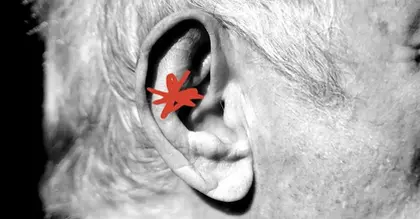
- Attention deficit hyperactivity disorder (ADHD) is most commonly diagnosed in childhood, but diagnoses in adults are increasing.
- Adult ADHD is associated with a higher risk of developing dementia, but experts do not yet know why.
- A new study has found that people with ADHD in adulthood have increased iron in regions of their brain and elevated levels of markers of nerve damage, both of which are also seen in dementia.
Research suggests that adults with ADHD have a higher risk of developing dementia, and the reasons for this are currently unclear. Now, a new study has supported this link and suggested the neurological mechanisms involved in this increased risk.
Professor Paul G. Unschuld, head of the Division of Geriatric Psychiatry of the HUG, associate professor in the Department of Psychiatry at the UNIGE Faculty of Medicine, and the initiator of the study, explained in a press release why they carried out the research:
“Recent epidemiological studies show that adults suffering from ADHD have an increased risk of dementia at an advanced age, but the mechanism through which ADHD constitutes a risk is not known.”
Their study, published in
“The findings provide an interesting perspective on the long-term neurological effects of ADHD, but the study’s small sample size (32 ADHD patients) means broader conclusions should be approached with caution. More longitudinal research is needed to confirm whether brain iron accumulation and axonal damage directly increase dementia risk or if other factors (e.g., lifestyle, medication, genetics) contribute to the observed patterns.”
— Steve Allder, MD, consultant neurologist at Re:Cognition Health, who was not involved in the study
Although iron plays an essential role in brain functioning, excessive accumulation can cause damage to nerve cells and immune cells in the brain, leading to neurodegenerative diseases such as Alzheimer’s. Studies have shown that as we age, iron accumulates in our brains, and this may be associated with poorer cognitive performance.
For this study, the researchers recruited 32 adults with a clinical diagnosis of ADHD (aged 20-58 years, mean age 35) and 29 age-matched controls (aged 19-59 years, mean age 32). All participants underwent brain magnetic resonance imaging (MRI), standardized psychometric testing and assessment of lifestyle factors, such as smoking and
To assess iron deposition in the brain, the researchers used quantitative susceptibility mapping (QSM), a form of scanning that can detect areas of magnetism in the brain.
Marissa Sobolewski, PhD, Assistant professor of Environmental Medicine and Neuroscience, University of Rochester Medical Center, explained the importance of this:
“Fe [iron] is critically important for neuronal myelination and more research is needed to understand how iron overload can influence neuronal damage, including research on a form of cell death called ferroptosis. Iron overload is a common phenotype associated with neurodegenerative disease and an important area for future research focused on neurodevelopmental disorders like ADHD.”
They also measured
In participants with ADHD, high iron levels were detected in the
“It is important that we begin to recognize that many diseases and disorders of the nervous system are co-morbid and share similar mechanisms of injury, like white matter and neuronal damage. Instead of studying these diseases and disorders in isolation, we should begin to study risk factors that these disorders share.”
— Marissa Sobolewski
As well as having higher iron levels than control individuals, those with ADHD had raised NfL levels in their blood plasma, indicating neuroaxonal damage. Studies have found that people in the early stages of Alzheimer’s disease have increased NfL, a biomarker of neurodegenerative brain change, in their cerebrospinal fluid, as well as in their blood.
Allder explained:
“Iron plays a crucial role in neurotransmitter synthesis, especially dopamine, which is already known to be dysregulated in ADHD. However, excess iron can lead to oxidative stress, damaging neurons and possibly accelerating neurodegeneration.”
“High iron levels can promote oxidative stress, which may damage neuronal axons. This aligns with the increased NfL levels found in ADHD patients, which indicate axonal injury,” he added.
Attention deficit hyperactivity disorder (ADHD) is a condition usually diagnosed during childhood, but may continue into, or be diagnosed in adults. In adults, it is characterized by some or all of the following symptoms:
- Difficulty paying attention, being easily distracted and interrupting people
- Problems with organization, following instructions, and completing tasks
- Restlessness and difficulty sitting still
- Forgetfulness
- Easily becoming irritable, impatient, or frustrated
- Difficulty dealing with stress
- Impulsive behavior.
According to the
Studies have found that people with ADHD may have widespread micro- and macro-structural differences in their brain from people without this diagnosis.
The authors suggest that in adult ADHD, there may be a link between excess brain iron and neuroaxonal vulnerability, possibly mediated by oxidative stress, which could account for the association between adult ADHD and dementia.
“If ADHD-related brain changes persist into adulthood, the combination of oxidative stress, inflammation and neuroaxonal vulnerability could increase susceptibility to neurodegenerative conditions like Alzheimer’s.”
— Steve Allder
The authors acknowledge limitations in their study, particularly that as a cross-sectional study, it cannot detect changes in participants over time.
However, Unschuld suggests that their findings might enable targeted prevention strategies to be developed to reduce the risk of dementia in persons affected by ADHD.
In a press release, he called for longitudinal studies “to determine if a reduction of iron levels in the brain is a potential treatment pathway for preventing dementia at an advanced age in persons with ADHD.”





